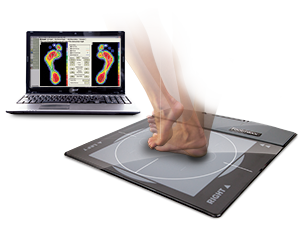
orthotics and work place injuries
We all know the human body is connected, and for a chiropractor, some of these relationships are old hat, especially when it comes to back pain.
I’ve just started to participate in an Industrial Commission of Arizona ad hoc committee on chronic pain management, although one of my colleagues has been on the panel since it started and has a much better idea of the objectives of the committee. However, even in my first meeting, there seems to be a heavy focus on medication management and pain management (which includes all the types of injections used for chronic pain). There is very little focus specifically on manipulation and chiropractic care–it is just lumped together under “conservative care.” And here in the workman’s compensation arena in Arizona, chiropractic care is microscopically small chunk of this conservative care.
Given how incredibly effective we are (chiropractic care is the most efficient model of care delivery in healthcare today for non-surgical spinal complaints, and leads to an overall 30% cost savings across the board which translates into BILLIONS of dollars saved), this omission is glaring.
So what does all this have to do with this particular study? Chiropractic care does NOT equal manipulation, although this is a tool heavily used in a chiropractic office. Rather, most chiropractors will utilize a wide variety of tools to help patients manage pain, both acute and chronic. These can include:
- manipulation
- TENS units
- exercises / rehab
- home instructions
- counseling on long-term management / avoidance of flare ups
- stress management
- heel lifts / orthotics
I know that in our office discussions on pillows, sleeping positions, sleeping surfaces, the absolute need to move around and exercise, ergonomics, stress management and occasionally inversion tables and at-home cervical traction collars are pretty much a daily thing. The point is that chiropractors are, in general, one of the most competent providers in the health care system for managing pain. Of course, my opinion may be slightly biased, but I can, as usual, back up this bias with solid evidence.
Now, if I can direct your attention to the last bullet point above, orthotics, we can get back to the study.
Researchers took a group of 62 patients presenting with chronic (longer than![]() 3 months), nonspecific, low back pain after suffering a work-related low back injury and followed for 6 weeks. The groups were split up into:
3 months), nonspecific, low back pain after suffering a work-related low back injury and followed for 6 weeks. The groups were split up into:
- About half the patients when given usual care, which consisted of a 6-week exercise therapy program along with prescription pain meds.
- The other half received the same therapy in addition to customized foot orthotics.
Our office has used a computerized gait analysis system for almost a decade now (I think maybe it’s time to upgrade the software…) and the orthotics are made based on the data obtained from walking across a pressure plate during a normal walking pace. Pretty cool to be able to see how your foot strikes the ground. This information can be very helpful for those suffering from low back pain. Support the arches (especially if your work duties involve standing for prolonged periods) and control the shock of the heel striking the ground and this can really be the final piece of the puzzle to help resolve or better control chronic low back pain.
So what did the researchers find 8 weeks later?
- Both groups had improved.
- The orthotic group had a lower disability scores (as measured by the Oswestry Disability Index).
- Those in the orthotic group were using less pain meds by the end of the study period.
Pretty impressive for a simple intervention with almost no downside. On top of that, the money saved on the medications alone would likely pay for the orthotics.
The bottom line is that, whether you’re suffering from a chronic work place injury or chronic low back pain unrelated to a work injury, make sure you ask your chiropractor if he or she thinks orthotics may help your chronic low back pain.
